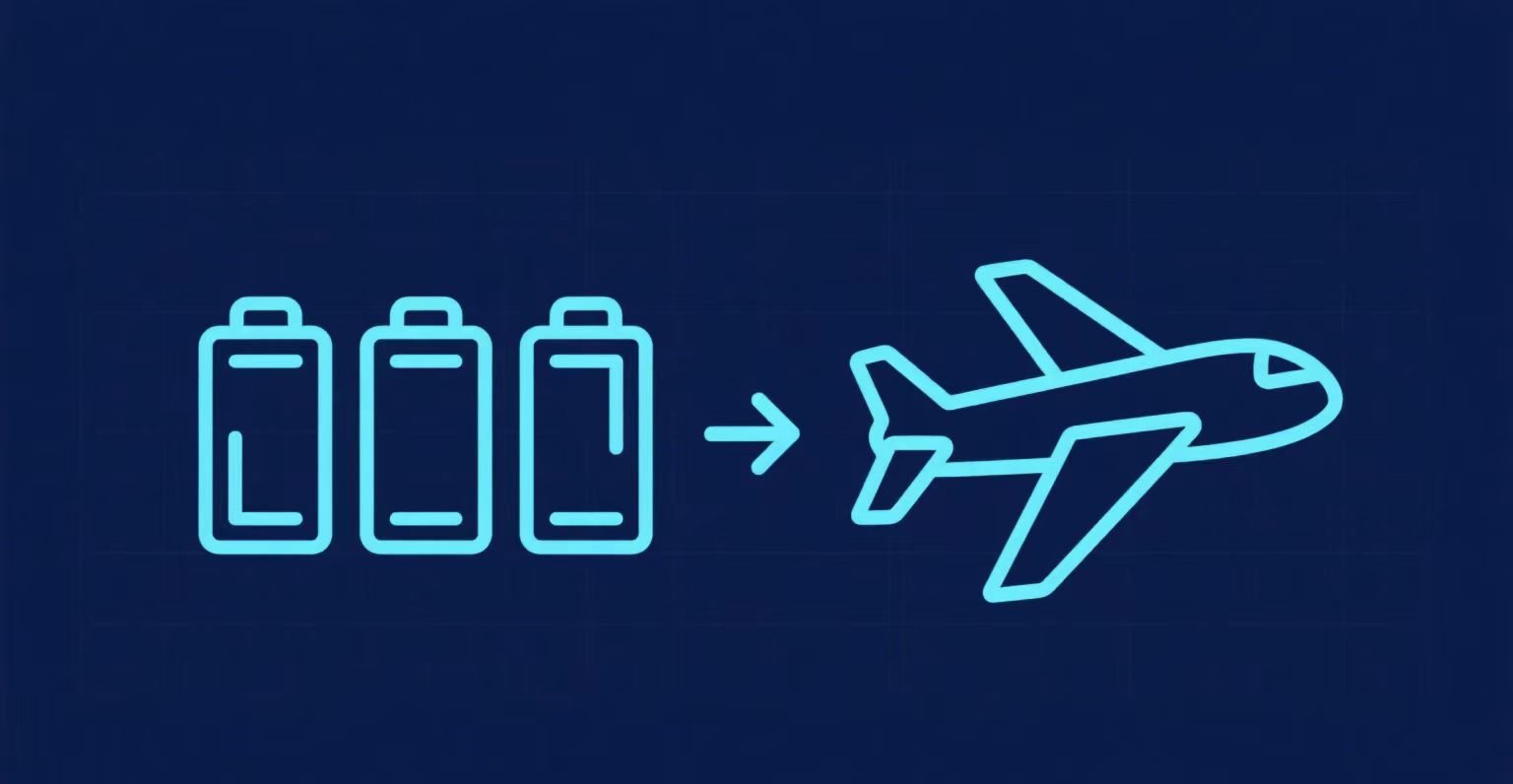Shipping Batteries by Air

Learn more about shipping batteries by sea.
Global manufacturers face unprecedented challenges-Shipping Batteries by Air
Regarding the 2024 new regulations for Shipping Batteries by Air
 IATA banned all “manufacturer-defective” lithium batteries from aircraft in 2023
IATA banned all “manufacturer-defective” lithium batteries from aircraft in 2023 FAA now requires fire-containment pallets for shipping batteries by air >100kg
FAA now requires fire-containment pallets for shipping batteries by air >100kg China Southern Airlines destroyed $2.3M of non-compliant battery cargo last quarter
China Southern Airlines destroyed $2.3M of non-compliant battery cargo last quarterWant to learn more about shipping batteries by air regulations to ensure safer transportation of your batteries? Contact us, and we will provide more professional arrangements for your battery shipping!!
Know Your Battery Type—Shipping batteries by air
When Shipping Batteries by Air, not all batteries are treated equally. The first step is identifying your battery type, as regulations vary drastically between chemistries and designs:
Lithium-ion batteries (UN3480)
Lithium metal batteries (UN3090)
LiPo batteries (Lithium Polymer)
Batteries contained in equipment (UN3481/UN3091)
Type | UN Number | Max Air Transport | Key Restriction |
Li-ion | 3480 | 35kg/package (PI 965) | SoC ≤30% |
Li-metal | 3090 | 2kg/package (PI 968) | <1g Li/cell |
LiPo | 3480 | Special vibration test | Fire-retardant padding |
In Equipment | 3481 | 5 devices/box | Original packaging |
Fire Prevention for Shipping Batteries by Air
When Shipping Batteries by Air, preventing battery fires is absolutely critical. Here are the key steps for reducing the risk of ignition:
Phase 1: Prevention
Phase 2: Detection
Real-time sensors monitor:
- Temperature spikes >1°C/sec (thermal runaway threshold)
- Volatile organic compounds (VOC) from electrolyte off-gassing
- Pressure changes indicating swelling
Phase 3: Suppression
Method | Activation Trigger | Containment Capacity | Our Implementation |
Aerosol-based | 79°C | 2,000Wh | Standard in UN boxes |
Phase Change Material | 65°C | 25,000Wh | For pallet-sized shipments |
Vented Containers | 100kPa pressure | Unlimited | Charter flights only |
Why This Beats Standard Packaging:
- ABC Dry Powder fails on lithium fires (NFPA 484 Confirmed)
- Water Mist Systems accelerate reactions in metal batteries
- Standard Fire Blankets can’t contain jet-fuel-temperature blazes (900°C+)
Pro Tip: Look for UN Mark “UN 9A/Y/0999/USA/XXXX” – the “A” denotes advanced suppression systems meeting FAA 2024 Amendment 138.
Shipping Batteries by Air: IATA, ICAO, and Country-Specific Rules
IATA Dangerous Goods Regulations (DGR): The Global Baseline
- Quantity limits: For lithium-ion batteries shipped as cargo (not with passengers), the maximum net weight per package is 35kg for most aircraft.
- State of charge (SOC): Lithium-ion batteries must be shipped at ≤30% SOC to reduce fire risk—critical for large shipments.
- Prohibited shipments: Damaged, recalled, or prototype batteries are often banned from air transport unless pre-approved by authorities.
Country-Specific Requirements
- U.S.: The FAA requires shippers to use TSA-approved carriers and provides a “Battery Shipping Guidance” document for domestic and international flights.
- EU: EASA mandates that all lithium battery shipments include a “shipper’s declaration for dangerous goods” and comply with ADR (road) rules for ground transport to/from airports.
- Canada: Transport Canada’s Transportation of Dangerous Goods Regulations requires pre-shipment training for anyone handling battery cargo (we offer this training for clients at no extra cost).
The Hidden Regulatory Traps (2024 Edition)
IATA’s New Pitfalls
- “Pre-shipment thermal scans” required for all LiPo >100Wh
- Double-layer inner packaging for loose 18650 cells
- Electrostatic shielding mandatory for dry climates
Country-Specific Gotchas
- USA: FAA Form 1600.1 now requires cell-level traceability
- Germany: LBA demands German-language SDS sheets – even for transit cargo
- Vietnam: New “QBVN 24-01” regulation limits lithium shipments to 22kg/week
- Brazil: ANAC charges $280/document for manual DG declarations
Real Incident Breakdowns
Case 1: The Chicago Runway Fire (Jan 2024)
Case 2: Mumbai Customs Meltdown (March 2024)
Emerging Tech, Emerging Risks: Solid-State & Sodium-Ion Batteries
Solid-State Batteries (UNxxxx Pending)
Sodium-Ion Batteries
The Compliance Checklist: What You Need Before Booking Your Shipment
UN38.3 Testing: Non-Negotiable for Lithium Batteries
Documentation: Paperwork That Speaks “Compliance”
Packaging: More Than Just a Box
Packaging Level | Key Requirements | Our Service Implementation |
Inner Packaging | • Each cell/battery in non-conductive material (e.g., VCI plastic bags) • 18650 batteries: Individual sleeves + tic-tac-toe grid isolation • Large packs: Fire-retardant foam partitions (≥30kg compression resistance) | • Pre-shipment inspection • Non-compliant products will be repacked |
Outer Packaging | • UN-certified box (Marked “UN 3480” for Li-ion) • Dangerous Goods labels (100x100mm minimum) • Orientation arrows + 24hr contact info | • The warehouse will label each item in compliance with regulations • Assist with UN reporting |
Final Packaging | • Ventilated wooden crates/pallets • Corner protectors + steel strapping • ISTA 3A compliance (1.2m drop test proof) | • On-site wood crate fabrication • Fireproof lining |
Please prepare the materials as required. If you have any other questions, feel free to consult us!!
How We Make Air Shipping Batteries Easier: Our Process
Before shipping lithium batteries by air, extensive preparatory work is required. From product packaging to battery customs clearance procedures at the destination, all must be completed in advance.
Pre-shipment Audit
Airline Partnerships
End-to-End Tracking
Competitive Prices
Common Questions About Shipping Batteries by Air
Only under IATA Special Provision A88 with:
- Notarized test reports
- Fire containment overpacks
- Private charter arrangements
Top 3 reasons:
Sample Shanghai→Chicago:
Component | Cost |
Air Freight | $4.80/kg |
DG Surcharge | $110/AWB |
UN Packaging | $18/unit |
Total (100kg Li-ion) | $812 |
